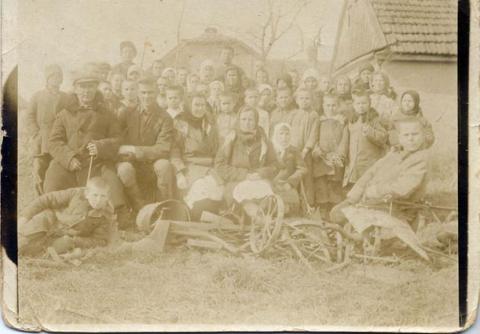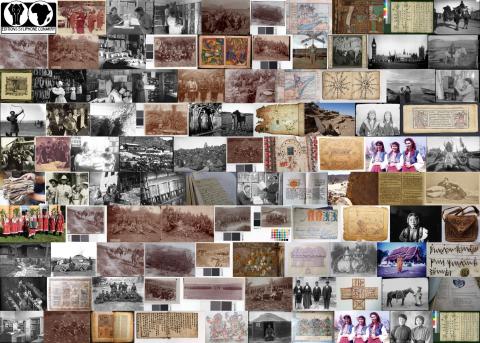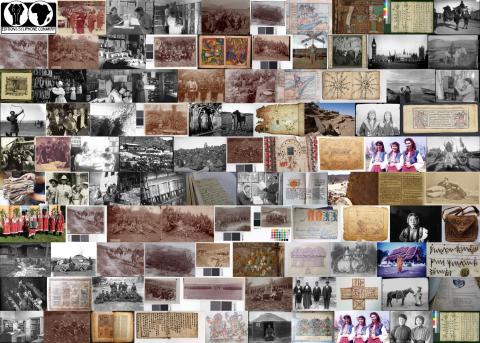
Aims and objectives
The aim of this project is to save documents related to an archaeological expedition which, in 1929-1935, investigated a unique complex of monuments from the Old Russian era located near the village of Raiki in the Kyiv region.
This archaeological expedition, led by T. Movchanovskiy, explored a complex of monuments including a hillfort, settlements and a graveyard. Its uniqueness lay in the fact that it was the largest hillfort in the locality, with a special historical and geographical position on the border of the South Russ and the nomadic world. Raiki is the only fully excavated South Russ hillfort dating from the 13th Century, which collapsed after a sudden raid. The lost people, animals, buildings, decoration, food and treasures had not been stolen and had remained intact at the time of the excavations. Thanks to the suddenness of the settlement failure there is the possibility to study the peculiarities of medieval life. All the above was documented by the expedition leader. These documents let us identify the exact time and the reasons that caused the tragedy, and to trace in detail the features of the economy and way of life of the early medieval town, including anthropological and ethno-cultural characteristics of the population.
The principles and methods used to conduct the field researches were new for the time and makes the expedition documents especially valuable. Documents describing the research history and the researchers' fate are unique also. The expedition leader was arrested and was executed in 1936. He had not managed to process and publish the findings of the excavations. Some of the documents were probably confiscated by Stalin's special services (NKVD) after the arrest of T. Movchanovskiy and some documents were lost during the Nazi occupation of Kiev in 1941.
At present, the majority of the complicated documentation on Raiki is kept within the archive of the Institute of Archaeology of the NASU. Documents are kept in four separate funds and the material has not been processed and catalogued. This archive consists of different types of documents. Annual scientific reports, field diaries, inventory lists and register cards for artefacts, rough copies of the advanced studies with text documents on various organizational and financial matters of the expedition - approximately 97 separate files with an overall volume of 2950 separate leaves of different formats. 123 field drafts and pictures, including unique water-colours, are kept within 15 separate files. The paper of these documents is of extremely bad quality. Most of the handwritten texts and drafts are in pencil with the writing wearing off each time the document is used. Plans and drafts are in the worst condition with large format drafts often torn.
The expedition's photographic archive needs special attention. There are 368 glass plate negatives of various formats. Because of unsatisfactory storage, there are cracks and spots and many items are broken into pieces with the emulsion being removed. There are also over 200 photographs related to the Raiki expedition kept within the Institute of Archaeology archive.
Some of the expedition's materials are kept in other archival institutions: the Institute of Manuscripts of V. Vernadsky National Library of Ukraine, the Central State Video-, Photo- and Phono Archive of Ukraine, the Berdychiv Affiliate of Zhytomyr Regional Archive, the State Archive of Safety Service of Ukraine. The expedition materials are alien to these archives, thus there is a threat of their improper processing, removal or transfer.
There is information that some materials of the expedition archive are kept in the cities of Zhytomyr and Odessa , and in the Russian Federation (Moscow and St Petersburg). The volume of these probable funds needs clarification.
The main aim of this pilot project therefore is to locate and survey all the existing archival material from the archaeological researches on Raiki hillfort, to compile a consolidated listing of all the material and to carry out trial digitisation. This will lay the groundwork for a future major digitisation project.
Outcomes
The main purpose of the pilot project was to search for and describe all archival materials on archaeological studies of the ancient Russ hillfort Rajki, which took place in the years 1929-1935 during the archaeological expedition led by T.N. Movchanovskiy. The search was held in the main archive repository - the archive of the Institute of Archaeology of the National Academy of Sciences of Ukraine - where these materials were stored in various collections. Also, the project searched for documents related to the work of the expedition in Rajki village, as well as in a range of other archival institutions - in Kiev and Berdychiv, Moscow, St. Petersburg, Odesa and Zhytomyr. The work summarised in the form of a list all the discovered archival documents (by categories) and the archival institutions in which these materials were stored. Also digital samples were created of documents in each category.
The most important outcome of the pilot project was the creation of a unified and complete complex of archival documents of archaeological research of the ancient hillfort in Rajki village. The unique full catalogue of documents related to the archaeological researches held in 1920-30 in Ukraine has been created and can serve as an example for creating such directories for further use in exploration of other monuments.
Survey results PDF document 2060KB
The records copied by this project have been catalogued as:
- EAP220/1 Collection of Documents of Rajki Archaeological Expedition [1925-1971]
Due to the cyber-attack on the British Library in October 2023, the archives and manuscripts database is currently inaccessible and we are unable to provide links to the catalogue records for this project.




